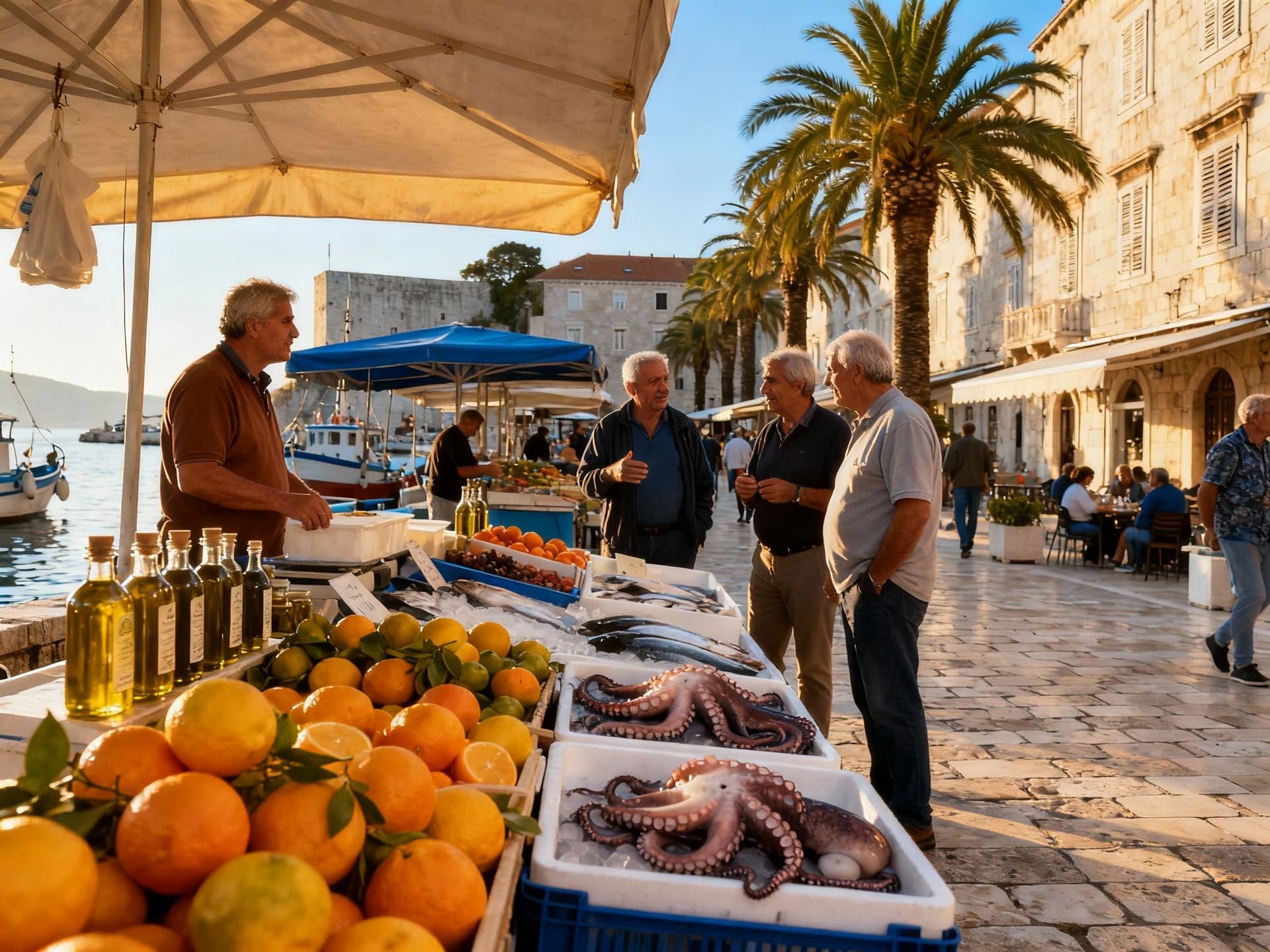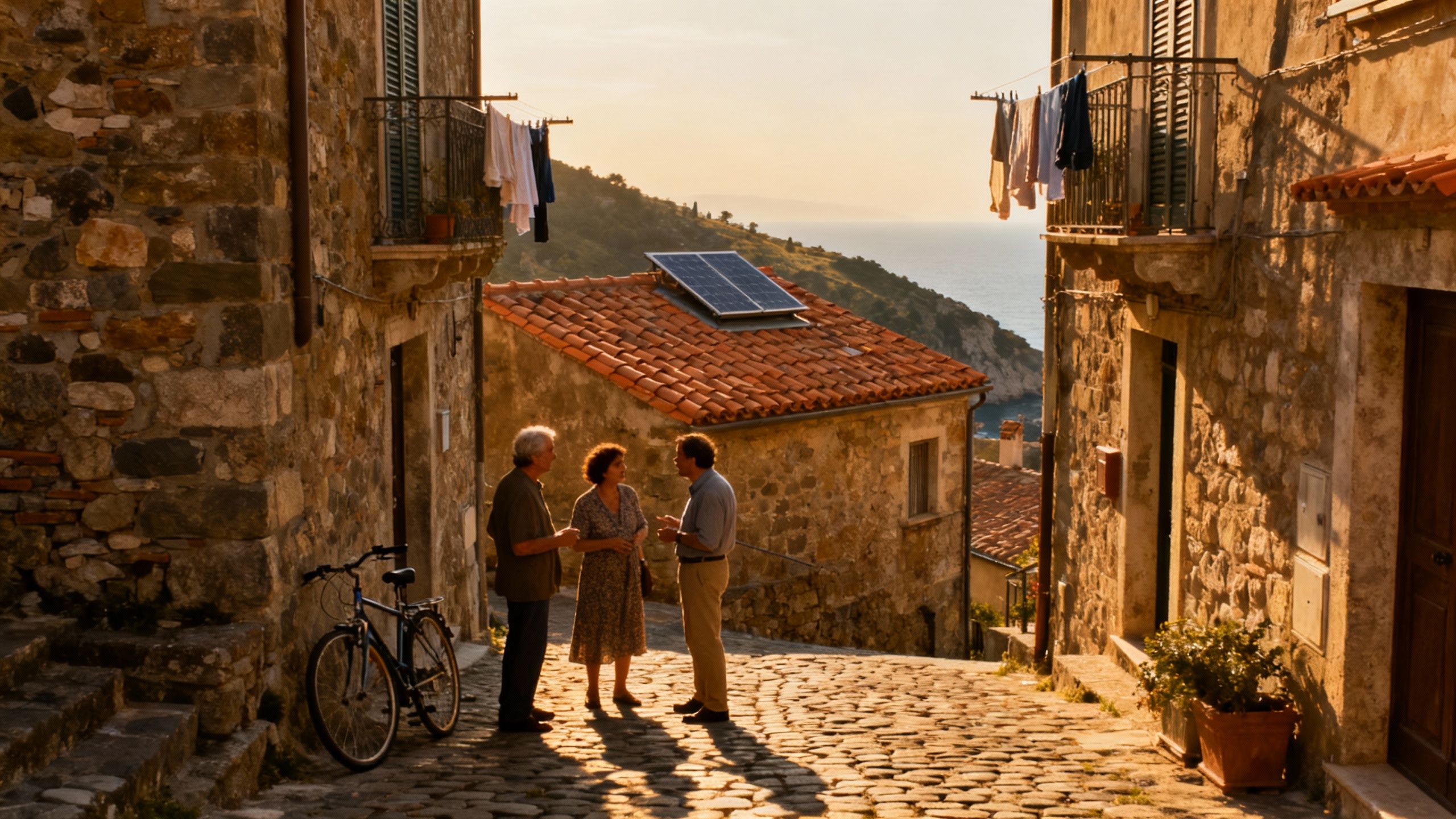Forest, Fields & Reciprocity: Hidden Rules of Croatian Land
How forest, agricultural and coastal rules reshape purchases in Croatia — practical, place-first due diligence for buyers who love land.
Imagine the Adriatic at dawn: fishermen mending nets in Mali Lošinj, a barista pulling a single-shot espresso on Split’s Riva, pine-scented wind through stone walls in inland Istria. Croatia lives in seasons—busy, luminous summers and hushed, green winters where villages reclaim their quiet. For buyers who value nature, craftsmanship and a slower rhythm, this is the draw. But the dream hides small, legal and ecological truths about land — especially forests, agricultural plots and shore-adjacent parcels — that shape what you can own and how you steward it.
Living the Croatian lifestyle: senses, seasons and neighbourhoods

Walkable promenades, seafood markets and stone courtyards are part of daily life on the Adriatic. In Zagreb, mornings are floral markets and café tables; in Rovinj and Pula you’ll hear Venetian-accented Croatian and smell grilled octopus. Inland, Gorski Kotar and Slavonia trade coastlines for forests, orchards and slow-paced village mornings — perfect for people seeking land, quiet and connection to soil. The key is matching a micro‑place to the life you want: seaside conviviality or meadowed solitude.
Coast: Split, Zadar, Dubrovnik and island life
Split’s Riva and Diocletian‑era alleys mean café life and short walks to ferries; Zadar’s sunsets and Dubrovnik’s ramparts are cinematic, expensive and seasonal. Islands like Brač and Hvar pair lavender fields with coves, but living here means ferry schedules, higher tourist activity and specific zoning rules tied to coastal protection.
Inland: Istria’s hill towns, Gorski Kotar’s forests, Slavonia’s fields
Istrian hill towns (Motovun, Grožnjan) offer truffle and wine culture, stone houses with thick walls and small artisan communities. Gorski Kotar gives deep fir forests, mountain streams and weather-hardened cottages ideal for regenerative projects. Slavonia’s plains lend themselves to agro-ecology and large plots. These inland places often deliver lower per-m2 prices, seasonal rhythms tied to agriculture, and opportunities for regenerative land use.
Lifestyle highlights to feel the place
- Morning markets in Dolac (Zagreb), seaside aperitifs on Split’s Riva, truffle hunts near Motovun, off-season coastal walks on the Pelješac peninsula, local olive‑oil tastings in Istria, pine‑framed mountain trails in Gorski Kotar.
Making the move: practical rules that shape what you actually can buy

The dream of owning a stone house or a forest plot meets a legal map that treats land differently. EU and EEA citizens enjoy near‑parity with Croatians when buying property; citizens of other countries depend on reciprocity and, often, ministry approval. Forests, protected zones and certain agricultural land carry additional restrictions. This isn’t bureaucracy for bureaucracy’s sake — it’s a patchwork built to protect ecosystems, heritage and coastal zones. That’s a feature for eco‑minded buyers, but it changes due diligence and timelines.
Property types and what they mean for use and permits
Homes, building plots, agricultural land and forests are treated differently. If you seek a farmhouse with olive terraces, confirm agricultural zoning and building rights. Forest parcels can be off‑limits for purchase by non‑EU nationals or carry stewardship obligations. Check cadastre records and the land register early; geodetic reports and valid building permits are the gatekeepers of registration.
How local experts protect lifestyle goals (and your deposit) — a stepwise approach
- 1) Map your lifestyle priorities (island ferry access vs. quiet orchard life) so your adviser can filter protected zones and typical repairs. 2) Order a cadastre & land‑register check to confirm boundaries and encumbrances. 3) Commission a geodetic survey and building permit audit before signing a pre‑contract. 4) Ask about local planning: coastal protection lines, Natura 2000 sites and municipal spatial plans. 5) Secure a Croatian PIN and bank account early — they speed tax and registration steps.
Insider knowledge: what expats repeatedly miss (and how to avoid it)
Buyers often assume coastal equals best value or immediate rental income. In reality, inland municipalities sometimes offer lower per‑m2 prices and clearer prospects for regenerative projects — but they require patience and local knowledge. Recent national data show steady increases in new‑build prices and a growing interest in rural areas; one in four buyers in recent years has been foreign, and regions vary widely in price per square metre. Know the numbers for the county you like before committing.
Cultural and community realities that affect daily life
Croatians prize local ties, family-run markets and municipal decision‑making. Learning a few phrases, attending town council meetings and using local craftsmen builds goodwill that eases renovations and access to local knowledge. Registering property and understanding local planning often requires patience; cadastral and land‑register checks reveal a property’s lived history — who built what, and when.
Red flags to spot in due diligence
- Unregistered extensions or “solidarno” additions without permits; parcels partially in Natura 2000 or coastal protection zones; missing geodetic surveys; unclear succession (inheritance) lines; unclear access rights (private lanes without recorded easements).
Conclusion — the practical, low‑impact way to fall in love and take action: treat the legal map as part of the landscape. Use local agencies who speak the language of ecology and planning, commission cadastre and permit audits early, and imagine life in the place across seasons before writing an offer. With patience, you’ll find a home that is both beautiful and compliant — a property that lets the land breathe and supports your long‑term stewardship.
Norwegian market analyst who relocated from Oslo to Provence; guides investors with rigorous portfolio strategy and regional ecological value.


